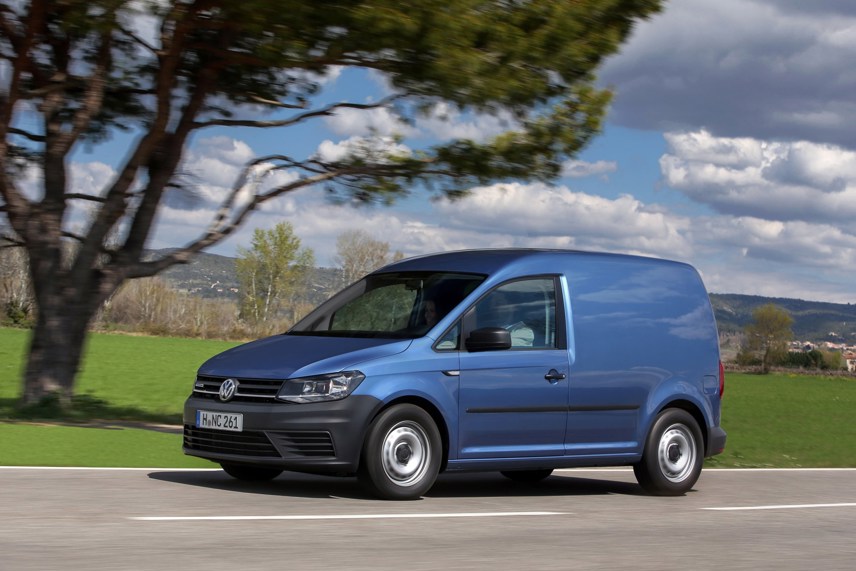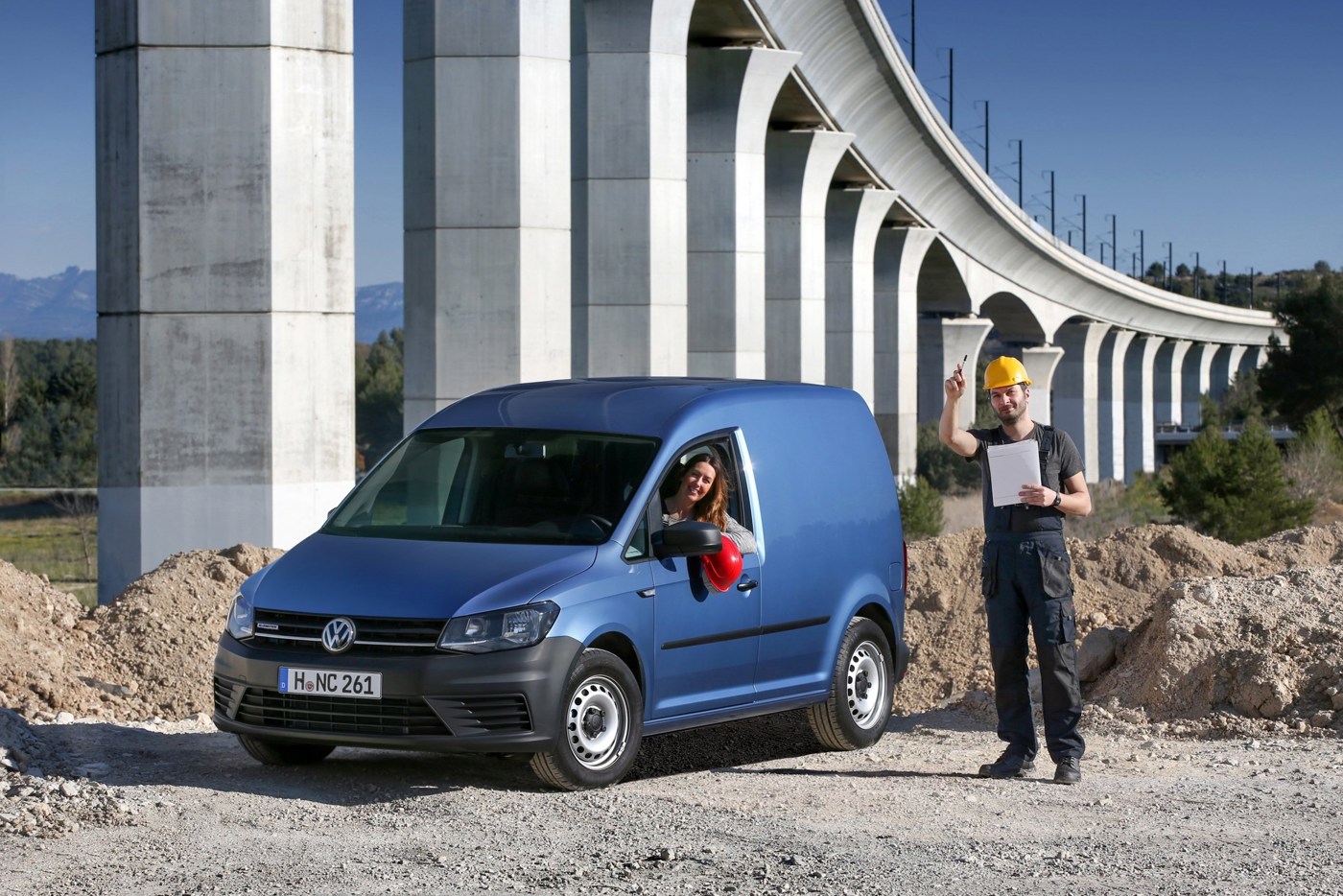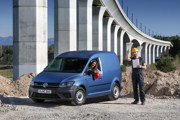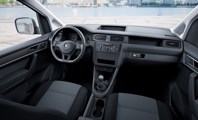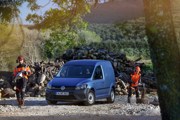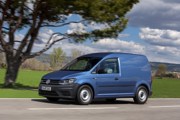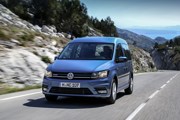Review
Volkswagen’s sudden elevation to the number two position in the van sales chart above long-time holder Vauxhall was startling in itself when it happened in 2013.
What made the feat even more extraordinary was the fact that, at the time, just about every manufacturer was launching new models or updating their present offerings, while the German vanmaker simply plugged on with its existing vehicles.
But now, 2015 is set to be Volkswagen’s big launch year.
A new Caddy goes on sale in the last quarter of the year, followed by a fresh Transporter – and then in 2016, Volks-wagen will unveil a brand new Crafter after its manufacturing agreement with Mercedes-Benz ends.
The current Crafter comes off the same line as the much-revered Sprinter, albeit with its own engines. However, the new Crafter will be built in Poland (the factory is already under construction) and is expected to be a model culled from VW’s MAN worldwide truck brand. We await more news of this with some excitement.
That’s for next year, but today is the Caddy’s big day and after attending a static launch recently, Commercial Fleet finally got behind the wheel of the new contender for a drive on the roads around Marseille in southern France.
Rather disappointingly, the new Caddy looks very much like the old one – in fact, if you squint a bit you’d be hard-pressed to tell the difference between the two, apart from a few sharpened-up lines.
In the press blurb Volkswagen rather grandly states: “The new design impresses, with sharper folds and clearly defined surfaces with stylish clarity.” Hmm.
Volkswagen Commercial Vehicles head of design Johann Kirzinger described the new Caddy’s look as “a bit more cheeky” than the outgoing model after a complete revision of its front and rear. He added: “Build quality remains the highest in its class and we have improved the seats and the noise refinement in the cab.”
The fact is, as with many German products, function takes precedence over form and there are certainly a whole host of upgrades under the metal to appeal to fleets.
For one thing, Volkswagen has optimised the suspension system to improve handling and boost payload capacity to go up to 1,005kg.
New Caddy is all about cutting-edge technology although many of the items on offer are likely to be paid-for extras – and that means that most fleet drivers won’t get them, as budget-conscious van fleet operators tend to opt for the basic models with no added frills.
So for the purposes of Commercial Fleet readers, what is of vital importance is how much of the new technology comes as standard. As yet, we don’t know as UK prices and spec are still under consideration.
In fact, as can be seen from the accompanying spec panel, details all round are still rather vague.
But if the Caddy comes with even half of this new technology as standard, we’ll be impressed. When it comes to safety, the new Caddy will be streets ahead of any of its rivals, even the new Ford Transit Connect which has stepped in as Caddy’s number one challenger.
The list of equipment is extensive and puts the Caddy ahead of its rivals. It includes front assist surround monitoring, which shortens stopping distances; post-collision braking, which helps alleviate secondary crash damage; city emergency braking to help prevent rear-end shunts at low speeds, adaptive cruise control that automatically slows down the vehicle if it senses danger ahead; light assist to dim the headlights when an oncoming vehicle appears; rear-view camera; and parking assist.
The last feature is the one that really impresses and we were able to try it for both parallel and 90 degree parking.
Available only on DSG auto box models, the driver simply follows the instructions on the dash to put the gear lever in reverse or drive and, with the foot on the brake, the van parks itself. It has been a feature on cars for a few years now – costing around £400 extra – and is a no-brainer on commercial vehicles with their obscured rear windows.
The big question is: will this safety device be available on the bigger Transporter and Crafter when they are relaunched? We weren’t given a direct answer, but from the looks on the faces of the Volkswagen bosses at the launch, we would say that the answer is probably ‘yes’.
Judging by the state of most 3.5-tonne long- wheelbase vans on the UK’s roads, the cost of parking assist would be saved – and more – the first time it prevents a knock.
Kirzinger said Volkswagen had developed a new range of engines which would offer fleet operators greater efficiency.
“There are now a selection of Euro 6 engines, which will reduce fuel consumption by up to 15% and the leanest engine will produce only 104g/km of CO2,” he said.
Looking at the engines first, we find that while most manufacturers are downsizing their cubic capacity, Volkswagen has ditched its old 1.6-litre unit in Euro 6 format and has gone exclusively for a 2.0-litre one, which incidentally also powers both the bigger Transporter and Crafter.
Euro 5 units will still be available – they will be sold until Euro 6 comes into force for all new vans in September 2016 – but Volkswagen is looking to push fleets into the cleaner engines which reduce NOx by around 85%.
They do, of course, have to be filled with AdBlue too, although a Volks-wagen engine expert told us that any costs associated with this little extra will be compensated for by the extra fuel economy.
One way of persuading fleets to buy Euro 6 (as they will be more expensive) is that some of the safety features won’t be available on the older engine range.
In Euro 5, there will be a 1.6-litre TDI unit on offer with 75bhp or 102bhp and a 2.0-litre engine with 140bhp.
Euro 6 engines, all 2.0 litres, offer 75bhp, 102bhp or 150bhp. The highest-powered unit will be available with Volkswagen’s DSG auto-box. There will also be a 1.4-litre petrol engine available in Europe but as yet bosses haven’t decided whether to bring it to the UK.
We tested both the 75bhp and 102bhp Euro 6 derivatives and were immediately impressed by the smaller-powered engine which, while being slightly more raucous than its bigger brother, offered plenty of power, even on some of the steep hills on our test route.
As the Caddy is offered in short and long-wheelbase variants, our advice would be to plump for the 75bhp motor when buying SWB versions and the 102bhp for the longer wheelbase models.
Meanwhile, there are improvements in the cab, too, including good quality plastics and 17 storage spaces, while appreciated the new seats. The seats in the old Caddy were hard and uncompromising; the new ones are slightly softer but still offer plenty of back support.
Another new item is the 12-volt take-off on top of the dash, as offered in most of Ford’s vans, which means drivers can plug in their sat-nav devices without trailing wires.
Verdict
Technological advancements and new clean engines, added to Volkswagen’s already legendary build quality, once again re-establish the Caddy at the head of the small van sector. We await full spec details with interest.



